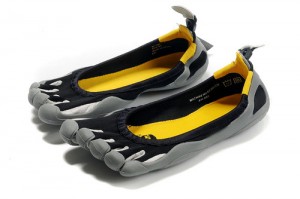
The shoe industry has evolved most rapidly over the previous decade and will continue to evolve as new technologies and markets are formed. We are in an era where athletes are training in barefoot running shoes and it’s not uncommon for a shoe to carry a microprocessor to play music and/or retain information for further gait evaluation post training. This article aims to unravel the hype and assist physiotherapists on advising the most appropriate footwear for their patients.

Any physiotherapist working with academy footballers will know that these players are at risk of overuse injuries due to their immature musculoskeletal systems (1). However, it is imperative that therapists can confidently identify when the players require a therapeutic intervention rather than dismissing their symptoms as ‘growing pains’. It has been found that 5% of all injuries in football academies are due to overuse (1), as some young footballers will partake in high volumes of physical activity. This article will discuss the evidence based management of Osgood-Schlatters condition.
Patellofemoral pain syndrome is a condition that is commonly encountered by the sports physiotherapist. There is a clear reason for this, it has been reported to affect approximately 25% of athletes (DeHaven & Lintner, 1986). Furthermore, it is the most commonly reported injury sustained by runners (Taunton et al., 2002). Thus, it is the subject of much discussion on this site, and we have provided articles on a number of management options for patellofemoral pain syndrome. However, this article will discuss new research on potential prospective indicators for the development of patellofemoral pain syndrome.



